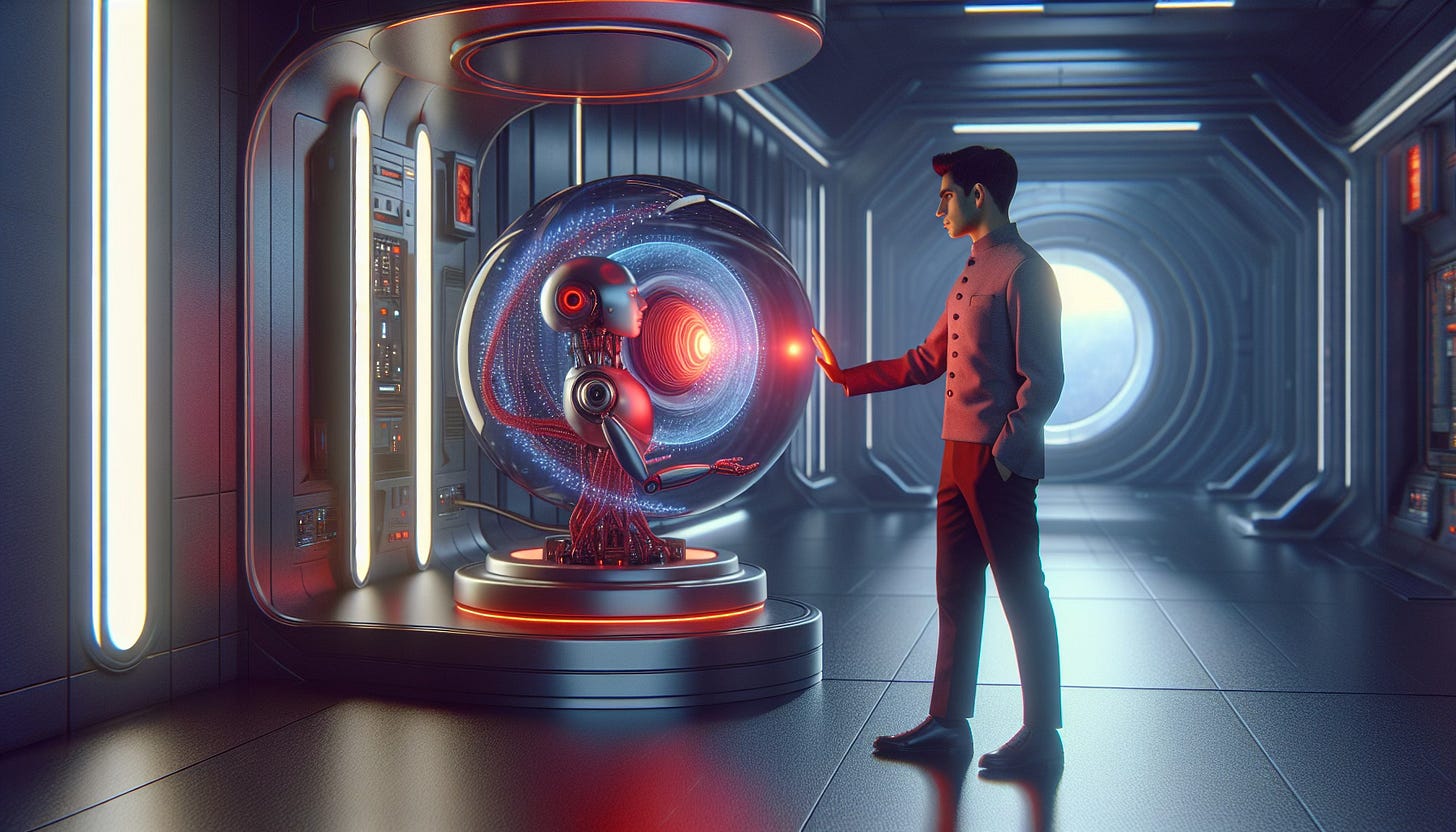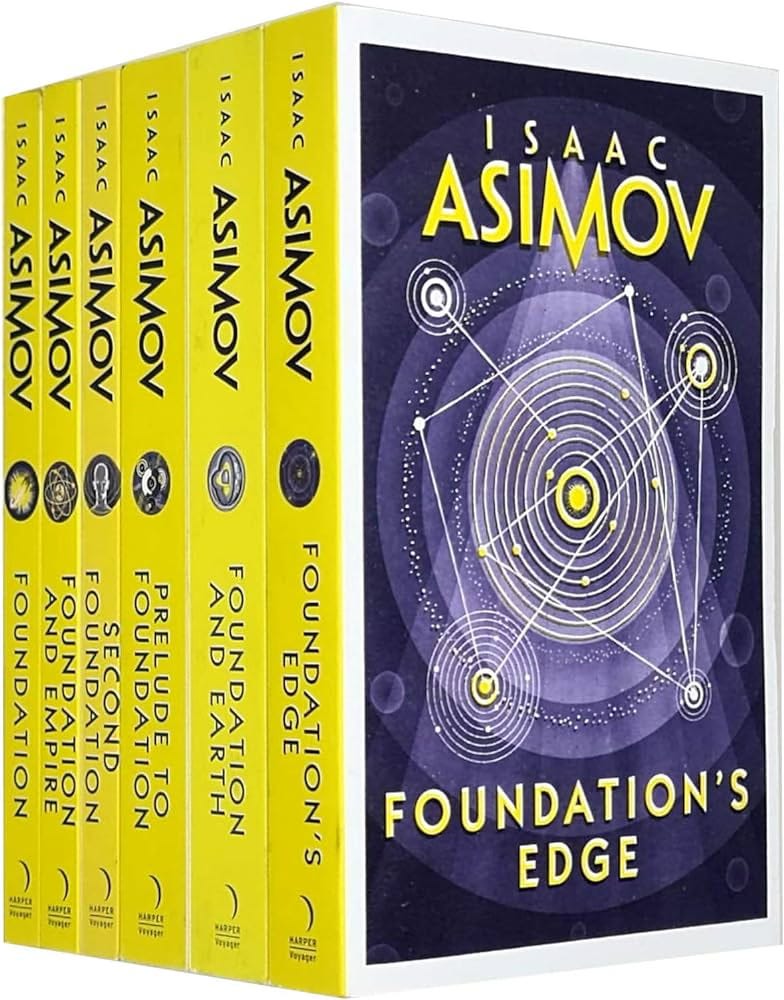Artificial Intelligence (AI) has been a regular part of Science Fiction (SF) Literature since its early inception. SF is generally accepted to have started with Mary Shelley’s Frankenstein. Although Frankenstein is a biological entity patched together from dead body parts, it is in fact a prototype of “robots” which are built out of nonorganic materials and are usually endowed with intelligence.
Who's Afraid of Frankenstein's Monster?
Our childhood nightmares are full of werewolves, vampires, demons and similar creatures at times. Undoubtedly, one of the most notorious of these creatures is Frankenstein's monster. Most of us have probably seen the original Frankenstein movie which has now been accepted as one of world classics, with the excellent acting of Boris Karloff (I remember s…
Robots are one of the manifestations of “intelligence” ascribed to non-human entities, although this idea has also evolved over time. The first mention of the word robot is found in Czech writer Karel Čapek’s theatre play R.U.R.(Rossumovi Univerzální Roboti). Written in 1920, it has used the Czech word for work (robota) to represent the artificial workers created from synthetic material in the script. The play shows the struggle of two different opinions, one aiming to use the robots as a cheap work force and the other positing that robots have souls and as such have to be liberated. The play ends with most humans being destroyed in a robot revolt and two robots playing the roles of Adam and Eve to re-populate the world with robots.
Robots were made popular through Isaac Asimov’s short stories, published starting from the 1940’s in SF magazines. Although these stories did not form a coherent unit, they all contained positronic robots, namely robots having artificial brains based on positrons1. Asimov mentions in his Introduction to The Complete Robot that he envisioned these robots as industrial products built with safety features and they were fashioned for certain jobs. He also seems to have invented the word robotics in his story Runabout published in 1942.
As the stories progressed, Asimov formulated the famous Three Law of Robotics, which were driven by the fictional scientist / robotics engineer Dr. Susan Calvin. His first story Robbie is about a robot that is a child companion. These robots aren’t described in detail, but they just have some limited responses and can not talk. The First Law of Robotics is mentioned in this story: “A robot may not injure a human being or, through inaction, allow a human being to come to harm”. When her mother sends the robot away because she thinks it’s not good for her, Gloria says that Robbie is not a machine but is a person. Thus we have the first glimpse of an existentialist issue with building artificial humans, regardless of how they look. The second and third laws are declared in the 1941 story Runaround.
Asimov continued using intelligent robots with his novels The Caves of Steel and The Naked Sun published in the 1950s. These are detective stories with robot detective R. Daneel Olivaw and his human partner Lije Bailey. The setting is an Earth which has very strict rules against robotics and human colonies in the Spacer planets which use robots extensively. There is not much discussion about the technology, but these are human-like robots (androids) with a vast intellectual capacity and they are still under control of the three laws.
In the meantime Asimov was also publishing the Foundation books. In the original trilogy, there are no robots, but use of some computers (including pads) is foreseen. However, later books ties the Robot series and the Foundation series by injecting R. Daneel Olivaw into the story of Foundation sequels and prequels and making him the mastermind behind the Empire and the two Foundations in the Foundation series.
So, in Asimov’s books artificial intelligence is portrayed through the positronic brains of robots and these have been programmed to benefit mankind. In fact, Asimov reveals later in the books that it was an intelligent robot who was constantly trying to protect humanity.
Asimov’s laws of robotics have been explicitly mentioned and used by other writers, but they are also being used as a blueprint for AI restrictions by many real AI researchers.
Asimov has probably had his most sentimental story-telling in his novella The Bicentennial Man, which was later converted to a novel, The Positronic Man, with the help of Robert Silverberg and later on worked into a film with the original title, directed by Chris Columbus. It tells the story of an Asimovian robot named Andrew Martin who eventually wants to be human. It is a very moving story and has all the dramatic elements driven by Asimov’s robots and the three laws of robotics at play. One of the characters who have been written with the influence of Asimov’s robotic concepts is Commander Data in the TV series Star Trek: The Next Generation. Over the course of 7 seasons of the TV series (and continued in Star Trek: Picard) Commander Data, who is the only android in Starfleet with somewhat mysterious origins, tries to be more human. I haven’t seen any indications of inspiration but Data sounds like a cousin to Andrew Martin I referred to.
The other end of AI portrayal is that of the malevolent AI. One of the best known examples is found in the Terminator film series. In this series, computers reach what we call today the AI singularity, namely the hypothetical point at which the AI becomes an independent superintelligence surpassing human capabilities. In the story, Cyberdyne creates the SkyNet, which is a network of intelligent computers that are supposed to control all critical cyber architecture, but once it is activated, it decides to get rid of humanity, which it sees as inefficient and a hindrance to its management of systems. This has been an inspiration of many similar stories and the malevolent AI is a very popular theme in literature and films. For me, the most horrendous example of a malevolent AI is found in Harlan Ellison’s short story I have No Mouth and I Must Scream. A malevolent AI that tortures the human beings inside its vast physical body by transforming them and almosty acting as a vengeful God.
A more subtle version of the malevolent AI was found in the 1968 film 2001: A Space Odyssey by Stanley Kubrick. The onboard computer HAL would decide to kill the astronauts rather than admitting that it started to malfunction, which results in weakening its reasoning faculty. The scenes where the astronaut Bowman disassembles HAL are very affectionate with the AI slowly losing all its faculties and falls back to the early instructions of its training.
Frank Herbert has also seen intelligent machines as a threat in his Dune series. The original series portrays a future where all Artificial Intelligence is banned. In later books written by Brian Herbert and Kevin Anderson, the origin of this ban is explained in detail. In the Dune universe, human mentats are the closest things to intelligent machines, since they use advanced reasoning and calculation skills, performing some feats that AI would do if it were allowed to exist.
Wachowski Brothers’ Matrix series of films constitute another example of malevolent AI in the sense that intelligent machines in this story keep (almost) all humans connected to a network and living in an artificial simulation while providing energy for the machines. The AI in the films is adaptive and malevolent, since it has become a game of survival for one side and the other.
William Gibson has imagined a world where people physically get connected to the Net and AI systems are a big deal, in his novel Neuromancer, which basically launched the concept of cyberspace. Indeed it is Gibson who used the term first in a short story and then in this novel.
Philip K. Dick’s Do Androids Dream of Electric Sheep?, which was later adapted to film as Blade Runner, describes replicants, which are organically built robots virtually indistinguishable from humans and can only be discovered through post-mortem bone marrow analysis.
One of the most creative uses of AI is in the TV series Westworld. Based on the original movie Westworld and its sequel Futureworld, the series depicts a huge team park in which androids (basically robots with organic bodies with enhanced organs and a very advanced electronic brain/CPU) indistinguishable from humans are used as entertainment in elaborate scenarios (western, feudal Japan and a few other themes exist) but they eventually transcend their programming and become truly intelligent. The robots go through an existential crisis and show hostility towards their creators. one of the early signs of evolution is the reveries the robots have. These are like dreams but seem like real (a bit like the hallucinations a lot of Large Language Models used for AI seem to suffer from today) A lot of the episodes are about how the robots cope with this situation and how the humans try to keep them under control for their nefarious goals. It is easily the most sophisticated treatment of artificial intelligence in creative works within the last few decades.
We can see that most AI depiction in SF was based on a replication of the human brain with artificial components and almost all of it is ascribed to robots or androids. Even Terminator uses robots extensively where Skynet is essentially a network of AI systems similar to what we have today. This is most likely because robots, with their physicality, are more interesting than computers with invisible software creating their “intelligence” behind the scenes. The Amazon TV series Next uses a malevolent AI which is effectively similar to the systems we have today (even down to speech synthesis) and is actually a computer software.
It is obvious that advances in AI in real life are slower than some SF writers have imagined them, but when we look at some of the corporate drama happening in the AI world, it is also clear that the concerns about AI taking a hostile view against humanity still exist, more than half a century after some writers imagined this and inserted it as the main theme in some of their works. It is becoming much more difficult to find relevant themes in this area without being repetitive.
It is probably inconceivable to design circuits working with positrons instead of electrons in our world, since the positron, being an anti-matter particle, would annihilate any matter it comes in touch with in an explosion.






It's interesting how modern technology can be inspired by science fiction, and how artificial intelligence https://servreality.com/machine-learning/ in real life can surpass our wildest visions from books and movies.